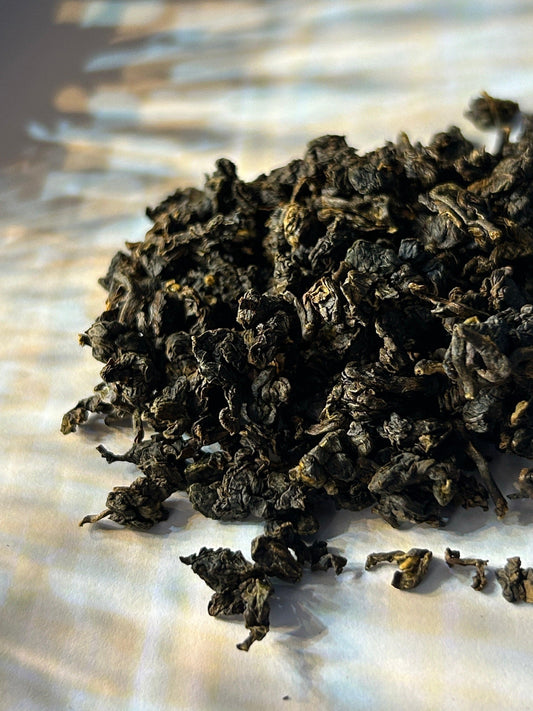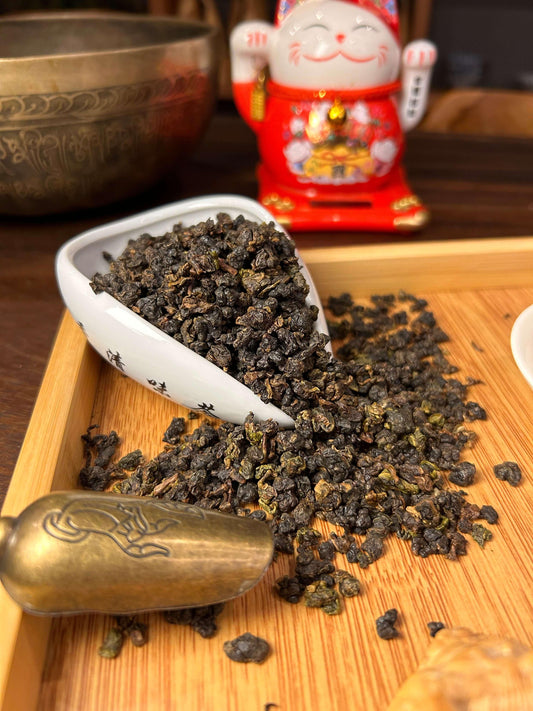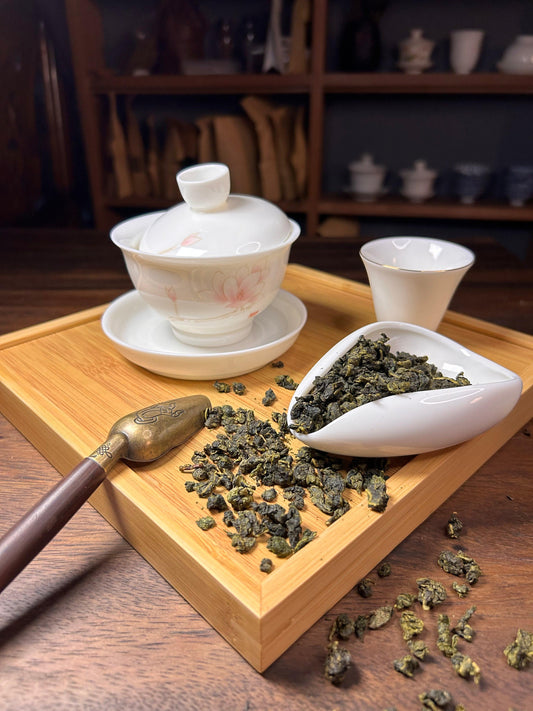Before water meets the leaf, before tea awakens in the cup — there is a moment of silence. The tea master opens the leaves, revealing their fragrance and form. For this purpose, there is Cha He (茶荷) — the tea vessel, a small bowl where tea “meets” the person.
The Meaning of Cha He in the Tea Ceremony
Cha He is one of the most modest, yet most symbolic, items in the tea set. It is used to present the dry tea leaves before brewing. The master pours the leaves into the Cha He and offers it to the guests, so they can see, smell, and feel the character of the tea.
Thus, the tea ceremony begins — not with water, but with observation and mindfulness.
Materials and Forms
Cha He can be crafted from various materials:
- Bamboo — light, natural, and warm to the touch.
- Porcelain — refined and pure, emphasizing the color and texture of the leaves.
- Wood — soft and comforting, preserving aroma.
- Clay or Ceramic — grounding, connecting the tea to the earth.
Its shape often resembles an open leaf, a small boat, or a shell — symbols of openness and receptivity. It seems to invite the tea to speak, to reveal itself.
The Art of Creation
In the workshops of China and Taiwan, Cha He vessels are made entirely by hand. Bamboo versions are carved from a single stem, then polished and coated with natural oils to preserve strength and prevent absorption of scents.
Porcelain and ceramic Cha He are fired at high temperatures — up to 1300°C. During the firing, the glaze may form fine cracks (crackle glaze), making each piece one of a kind.
Some artisans engrave calligraphy or symbols — phrases about tea, or characters meaning happiness, harmony, and longevity. Such vessels become not only functional objects but also carriers of philosophy.
Ritual and Symbolism
When the master opens the tea in the Cha He, it is like opening a door into the world of flavor and aroma. The guest inhales the fragrance of the dry leaf — the first meeting, the first dialogue with tea.
In Chinese culture, this act signifies respect: the tea is shown not for display or luxury, but as a gesture of sincerity and trust.
Sometimes the Cha He is passed around the circle, so everyone can experience the fragrance — a shared moment that unites all participants in quiet harmony.
Cha He as an Expression of Aesthetics
Cha He is more than just a vessel — it is an expression of one’s relationship with tea. Its surface, color, and curve are made for contemplation. It teaches stillness and appreciation of subtle beauty.
At Gaba Tea House, we see the Cha He as a symbol of respect for beginnings.
It reminds us that before tasting tea, one must first see its soul.
Conclusion
Cha He is the breath before the first sip. It helps us remember that the path begins with awareness. By observing the aroma and shape of the leaves, we learn to find beauty in simplicity.





